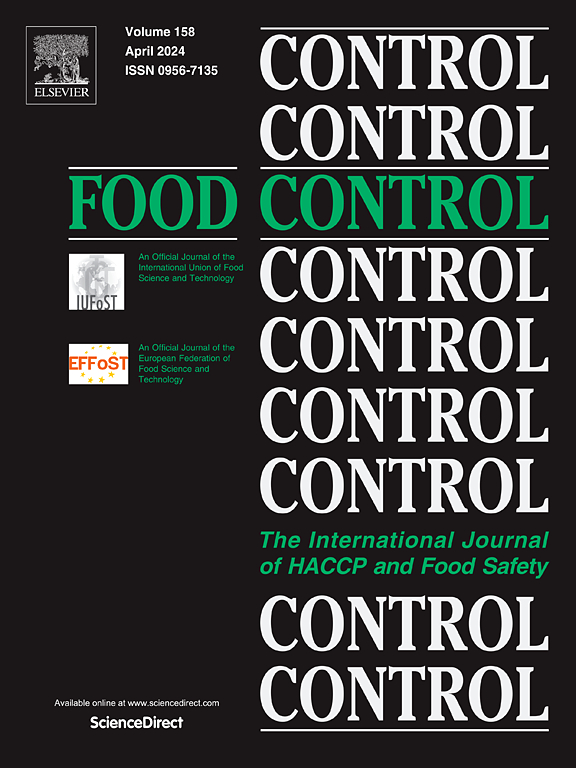一种基于votca的可见近红外光谱建模方法,用于解决食品质量分析中的样品变异性和生产线差异
IF 6.3
1区 农林科学
Q1 FOOD SCIENCE & TECHNOLOGY
引用次数: 0
摘要
样品特征在收获期间的变化,以及光谱仪组件的不一致性,通常会损害模型的可转移性和稳健性。为了解决这一问题,提出了一种新的模型更新策略——变量优化传递分量分析(VOTCA),旨在构建具有更强适应性的通用模型。本研究利用7个采收期和2条分选线采集的雪桃样品的可见近红外(Vis/NIR)光谱,预测其可溶性固形物含量(SSC)。采用分段直接标准化(PDS)和谱空间变换(SST)这两种公认的多模化方法,将结果与VOTCA进行比较。在收获期转移场景下,VOTCA的预测准确率较高(Rp = 0.852;rmsep = 0.675;RPD = 1.910),而在跨仪器迁移任务中表现更好(Rp = 0.906;rmsep = 0.683;RPD = 2.365),优于PDS和SST。此外,VOTCA在预测新批次时不需要额外的校准集,使其成为动态生产环境中实时质量评估的灵活有效的方法。本文章由计算机程序翻译,如有差异,请以英文原文为准。
A VOTCA-based visible near-infrared spectroscopy modeling approach for addressing sample variability and production lines disparities in food quality analysis
Variations in sample characteristics across harvest periods, along with inconsistencies in spectrometer components, often compromise model transferability and robustness. To address this challenge, a novel model updating (MU) strategy called Variable Optimization Transfer Component Analysis (VOTCA) is proposed, aimed at constructing universal models with enhanced adaptability. In this study, the visible near-infrared (Vis/NIR) spectral of snow peach samples collected across seven harvest periods and two sorting lines were analyzed to predict soluble solids content (SSC). Two recognized MU methods including piecewise direct standardization (PDS) and spectral space transform (SST) were used to compare the results with the VOTCA. In harvest period transfer scenarios, VOTCA achieved better prediction accuracy (Rp = 0.852; RMSEP = 0.675; RPD = 1.910), while in cross-instrument transfer tasks, it demonstrated better performance (Rp = 0.906; RMSEP = 0.683; RPD = 2.365), outperforming PDS and SST. Moreover, VOTCA does not require additional calibration sets when predicting new batches, making it a flexible and efficient approach for real-time quality assessment in dynamic production environments.
求助全文
通过发布文献求助,成功后即可免费获取论文全文。
去求助
来源期刊

Food Control
工程技术-食品科技
CiteScore
12.20
自引率
6.70%
发文量
758
审稿时长
33 days
期刊介绍:
Food Control is an international journal that provides essential information for those involved in food safety and process control.
Food Control covers the below areas that relate to food process control or to food safety of human foods:
• Microbial food safety and antimicrobial systems
• Mycotoxins
• Hazard analysis, HACCP and food safety objectives
• Risk assessment, including microbial and chemical hazards
• Quality assurance
• Good manufacturing practices
• Food process systems design and control
• Food Packaging technology and materials in contact with foods
• Rapid methods of analysis and detection, including sensor technology
• Codes of practice, legislation and international harmonization
• Consumer issues
• Education, training and research needs.
The scope of Food Control is comprehensive and includes original research papers, authoritative reviews, short communications, comment articles that report on new developments in food control, and position papers.
 求助内容:
求助内容: 应助结果提醒方式:
应助结果提醒方式:


